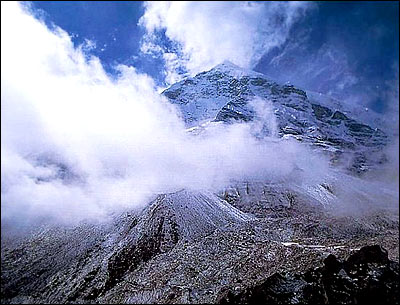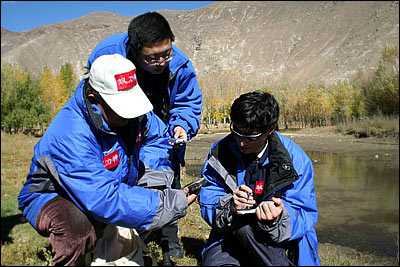| Tools: Save | Print | E-mail | Most Read |
| No Serious Melting of Himalayan Glaciers: Scientist |
| Adjust font size: |
Contrary to what many experts say, Chinese scientists have found no evidence in the middle and eastern part of the Himalayas that glaciers are either receding rapidly or melting fast. The glaciers in the region are melting comparatively slowly, said Zhang Wenjing, a leading scientist from an international Himalaya expedition team. In the 1980s, some overseas experts forecast that the Himalayan glaciers would melt away completely in 50 years, and experts in China predicted that glaciers in west China would disappear around the year 2020. Zhang, who works with the Chengdu Institute of Mountain Hazards and Environment under the Chinese Academy of Sciences, said: "Those predictions may be excessively pessimistic -- so far glaciers in the middle and eastern part of Himalayas have not shrunk on any large scale. "If that was the situation, the lakes under the glaciers would be flooded," Zhang said. Although acknowledging the effects of global warming, Zhang said the glaciers in the Himalayas and other parts of western China will not melt in the coming decades or even centuries. Zhang said that another widely reported forecast -- that the icecap in the South Pole would soon melt totally -- is also too pessimistic. The Antarctica icecap measures 13 million square kilometers. With average temperatures at 30 degrees centigrade below zero, a lot of heat is needed to make it melt, Zhang said. He said that the Earth's temperature will not continue to rise indefinitely, and a new "cold period" will come in several hundred years. At the end of 2004, China had more than 47,000 glaciers, covering an area of 59,000 square kilometers. The team launched a month-long expedition on Monday with a team of 12 Chinese and seven scientists from India, Nepal and Bhutan. The researchers will compare the physical geography, physiognomy, geology, ecosystem and economic development of the southern and northern slopes of the Himalayas.
(Xinhua News Agency October 18, 2006) |
| Tools: Save | Print | E-mail | Most Read |
 |
| Related Stories |
|
| Product Directory China Search |
Country Search Hot Buys |



